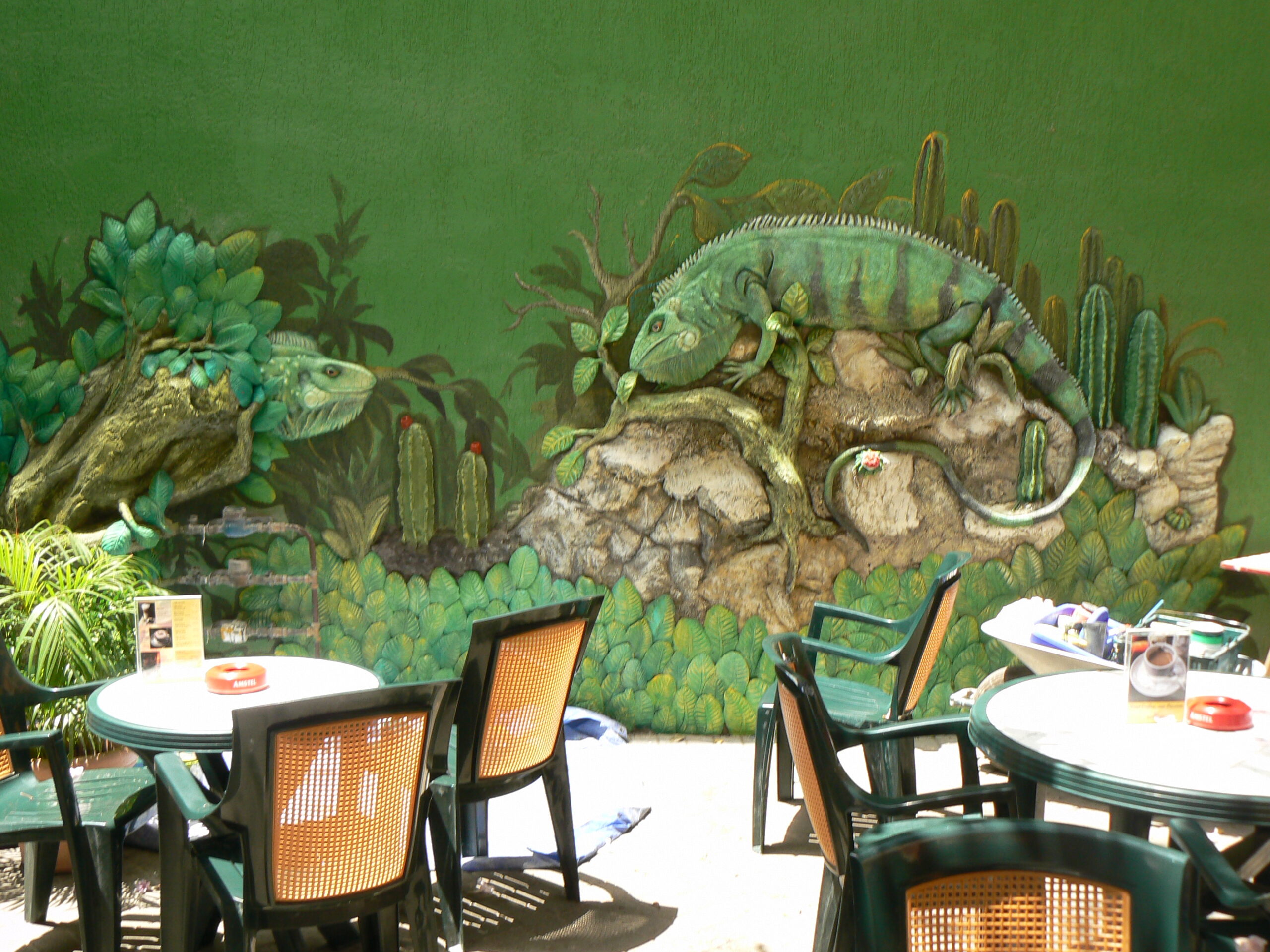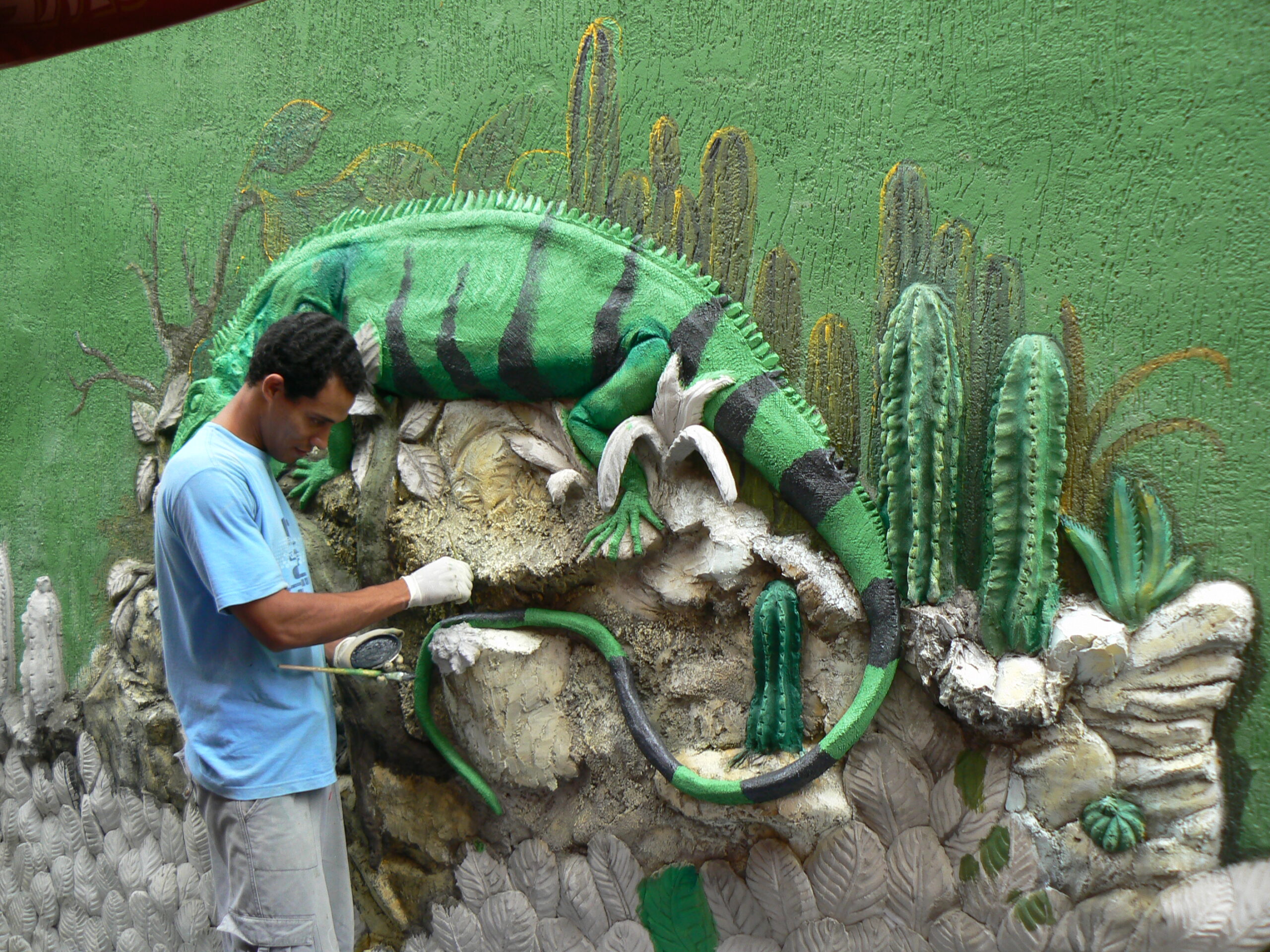Iguana en Punda Curaçao’s Wildlife Integrates with City Life
Given Esteban Ferrales’ has called Curaçao home for many years, it is no wonder that the natural landscape and its unique flora and fauna have been the subject matter he returns to the most in his artistic practice. His “Iguana in Punda” adorns the streets of the Punda district in Curaçao, a popular destination for tourists who wish to explore the vivid colors, tasty food, and local shops that reflect Caribbean life. Iguana en Punda brings wildlife into city life as Ferrales shows a glimpse into the ecology of the Caribbean.

Iguana en Punda combines the beauty of the natural wildlife with typical activities of city life in Curaçao
Ferrales’ wall mural is not only unique in subject matter but also in application. He creates these detailed images through the use of polychrome cement, a process where he builds and shapes the cement onto a wall before painting over it once it dries. This creates a three-dimensional element that adds more depth and realism to his work, making the viewer feel immersed in the scene

The mural was created by layering and shaping cement upon the wall to create its three-dimensional effect.
The final result is a wall relief like Iguana en Punda, which shows two iguanas amidst an arid, rocky landscape filled with cacti and other vibrant plants. One even appears to be disappearing into the foliage as his green color makes the perfect camouflage. Iguanas are commonly found in Curaçao, both in the wild and as a dinner option. Undoubtedly, Ferrales’s mural shows how the flora and fauna are entwined with city life in the Punda district. This serves as an excellent reminder of how the ecosystem interacts and depends on the other to stay balanced.

Once the cement dried, it was painted with vivid colors which added more realism to the mural.
